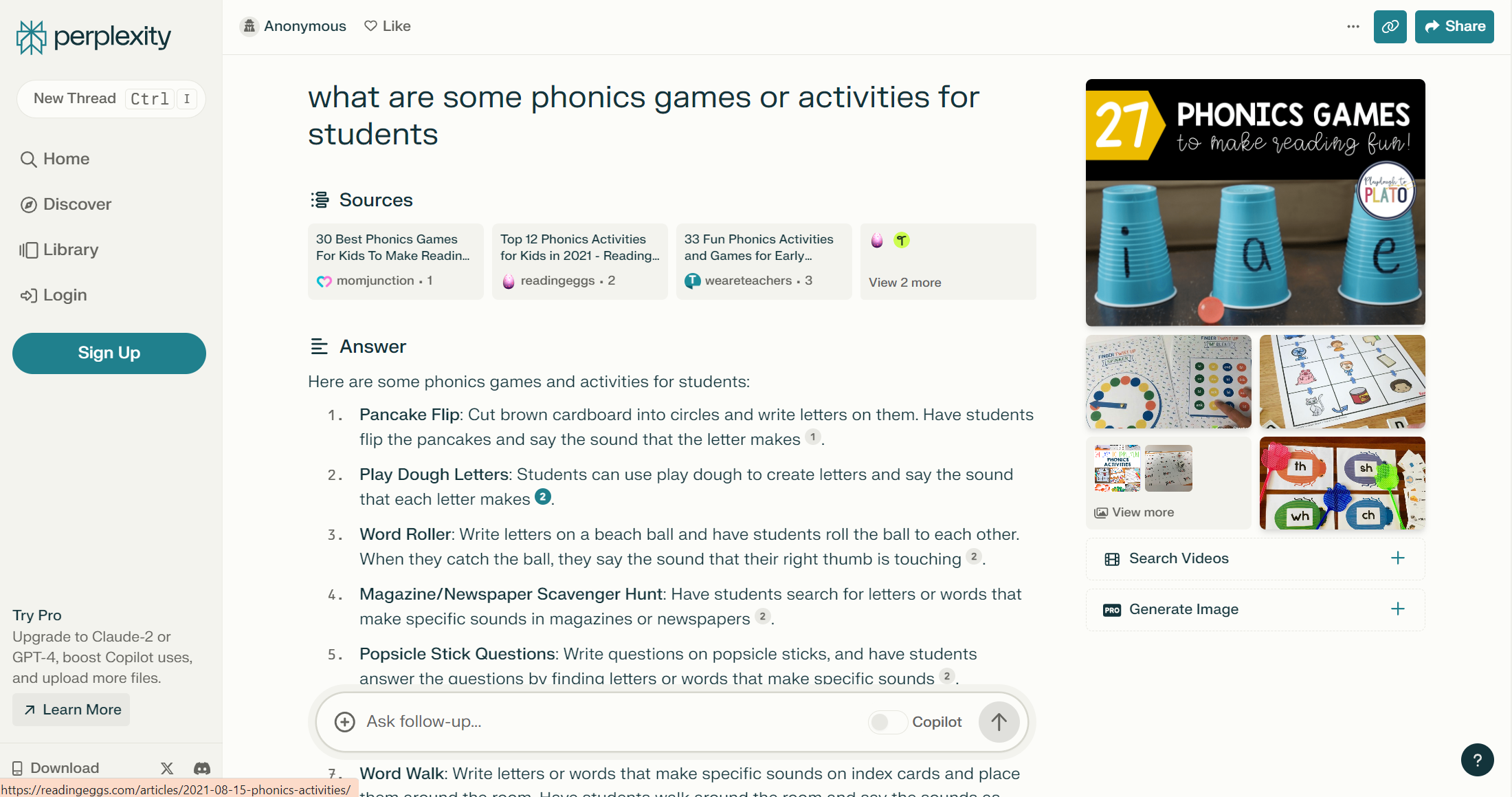Be my Co-pilot!
So, here are the details of my recent exploration of some fascinating online tools. First on the list was DALL-E2, which piqued my interest. However, there was a little hiccup: it requires credits, and unfortunately, I couldn’t generate images because I didn’t have an account with credits.
Next up was midjourney. I was eager to explore, but I must confess, the interface had me second-guessing. It looked a bit intimidating, almost like a scene from a hacking movie. So, I decided to play it safe and didn’t give it a go. Check it out if you dare: midjourney.
But fear not; the story doesn’t end there! I stumbled upon a true gem—perplexity.ai. This tool not only answers your questions with a mix of verbal and visual explanations but also goes the extra mile. It recommends sources, including academic writings, making it a real powerhouse for research.
Let me share a cool example. I threw the question, “What are some effective phonics teaching strategies?” Its response was not just a simple answer; it came with resources. And as a bonus, it suggested another intriguing question: “What are some phonics games or activities for students?” It gives you the citations. Don’t you see that perplexity directs you towards academic writings and related questions, allowing you to delve deep into the subject? It’s like a personalized research assistant, guiding you toward valuable texts that can open up new perspectives.


What’s even better? It’s completely free! Yes, you read that right. Perplexity.ai is now my go-to instructional tool, pointing me toward related questions and texts that truly expand my horizons. I’ve already bookmarked it, and I highly recommend giving it a spin. Who knows what knowledge awaits?
The integration of AI in education, exemplified by tools such as Perplexity.ai, holds promising potential for both university and high school levels. Through my exploration of AI, witnessing its ability to provide personalized answers and suggest resources, it became clear how AI can enhance the learning experience by offering guidance. Serving as an assistant for teachers and a guide for students, AI may contribute to a more dynamic and accessible educational environment. While acknowledging its benefits, it is crucial to address ethical concerns and challenges, particularly regarding the reliability and bias of information provided by automated responses. Additionally, practical considerations arise in determining the tool’s effectiveness and suitability for independent use by young learners, given its ability to generate free content. Despite these challenges, I am optimistic about the future role of AI in education, foreseeing it evolving into a more integral component that supports both educators and high school learners on their learning journeys.